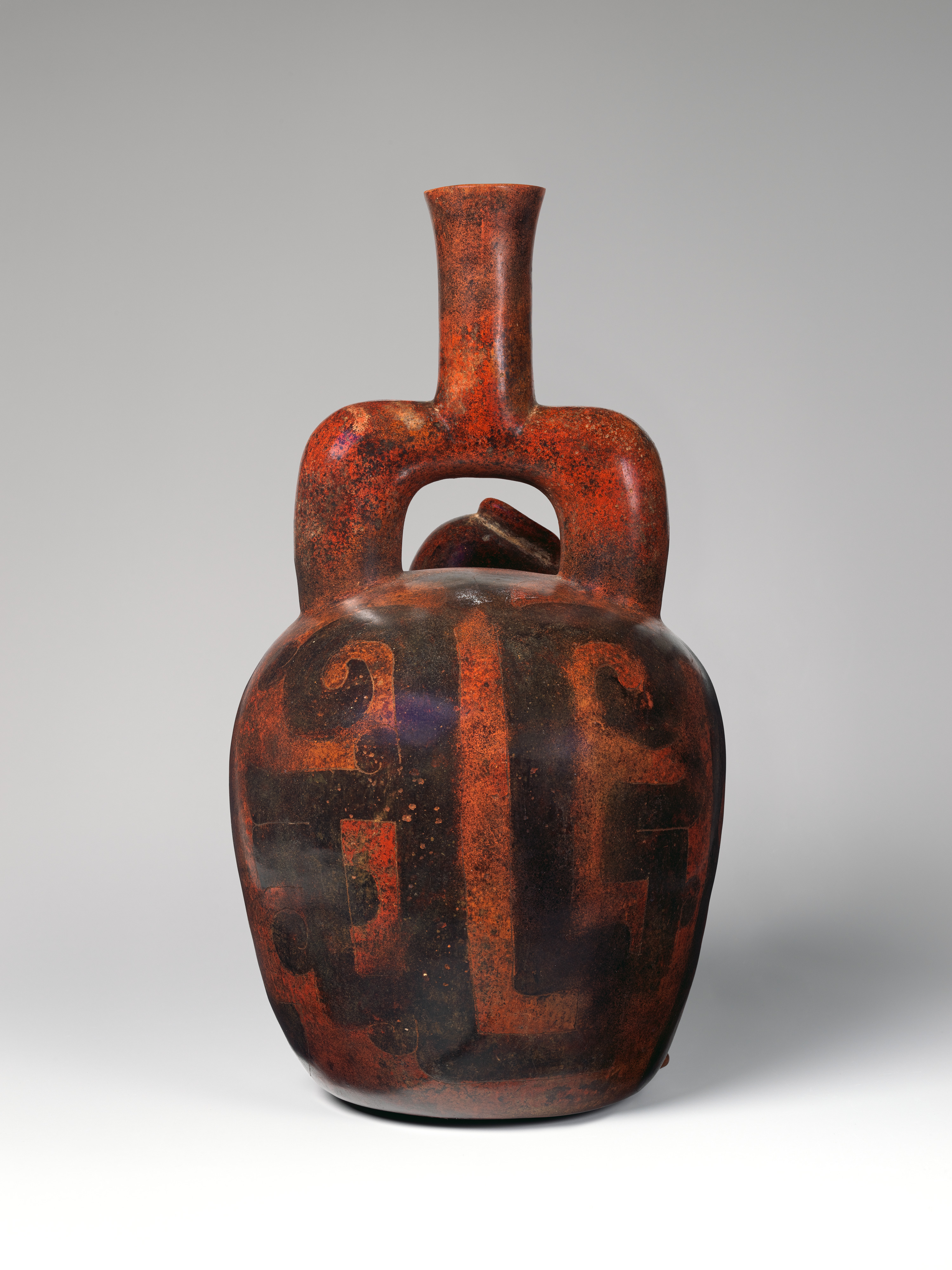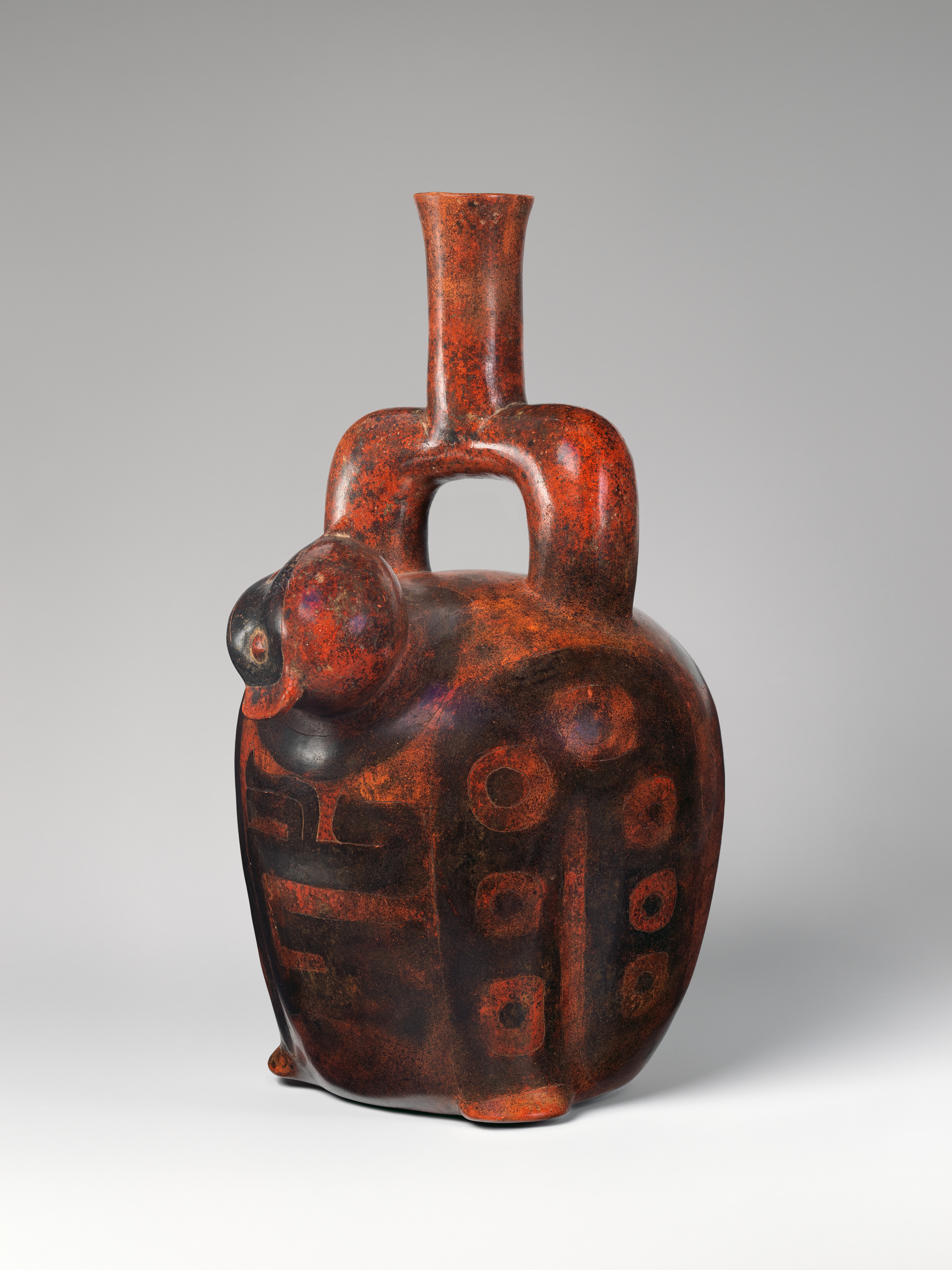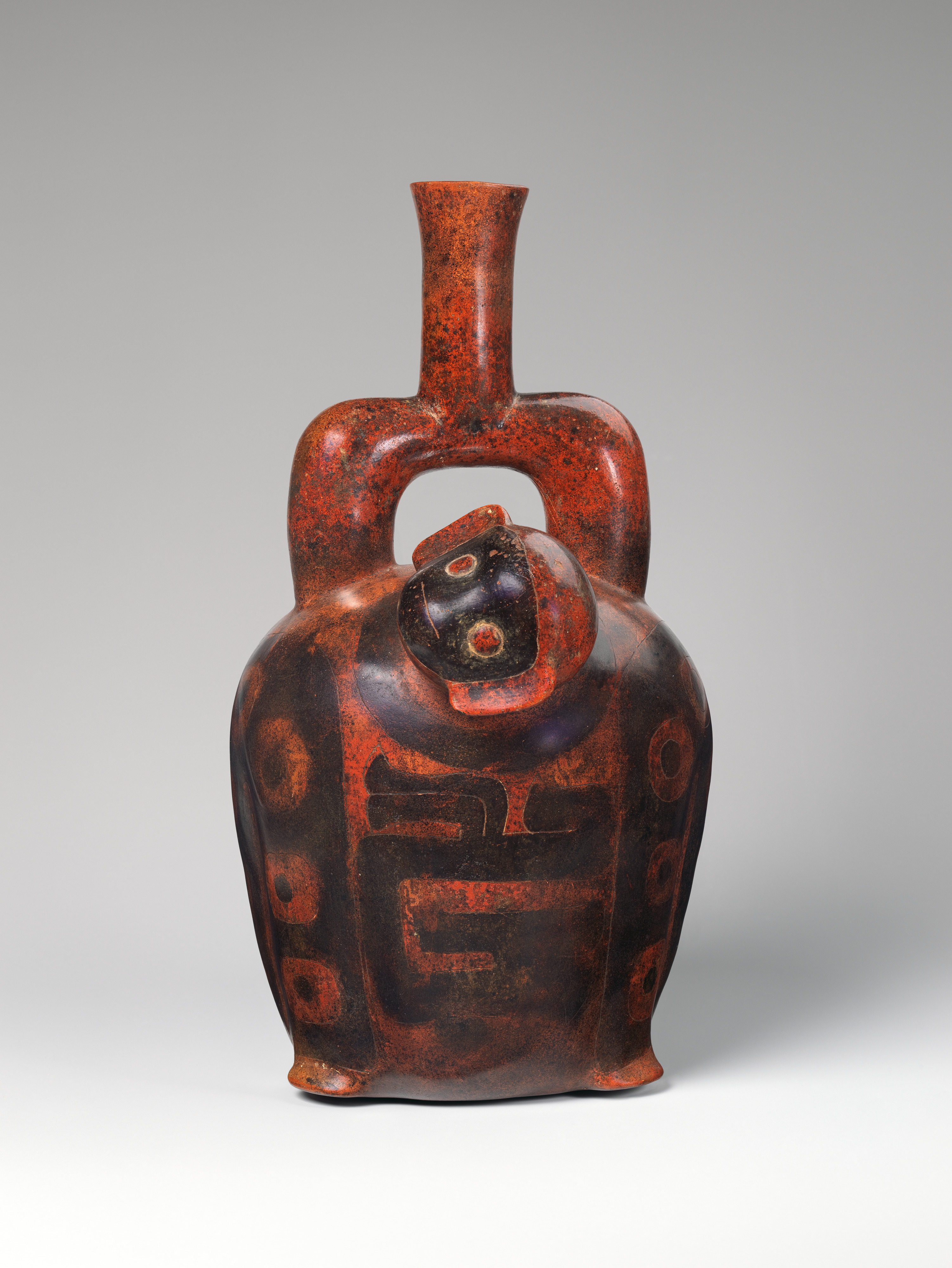Stirrup-spout bottle with monkey and snake
At first glance, this vessel seems to have been sculpted simply in the shape of a seated monkey. The legs are suggested by slight modifications of the bottle shape, and the head, rendered in three-dimensionally, is tilted to the side. By rotating the bottle, however, the viewer can discern a two-dimensional form painted on the back: a stylized animal head, shown in profile, with a snake-like tongue protruding in the direction of monkey head. From this perspective, the monkey’s legs become a snake’s body, the circular spots evocative of the skin of the macanche (Boa constrictor), a common predator on the Peruvian North Coast. Thus, by rotating this ceramic container, the viewer interacts with two animals from opposite and complementary perspectives. The monkey, a diurnal animal and the prey in this composition, is rendered in red, with certain features, such as the face, painted in black, whereas the snake, a nocturnal predator, is painted in black with some details, such as the snake’s markings, in red. This bottle is simultaneously an image of a placid, seated monkey and a scene of its capture by a macanche in the middle of the night. A similar object (ML040336) can be found in the collection of the Museo Larco, in Lima.
Around 1200 B.C., a religious tradition, known today as Cupisnique or Chavín, started influencing the visual arts of the North Coast and highlands of Peru. While some works combined multiple creatures, such as the present example, others were non-figurative or more abstracted. Aspects of this striking style, such as the stirrup-spout—a form itself adopted from even earlier traditions of Ecuador—would endure for centuries, ending only in the sixteenth century with the Spanish occupation.
Cupisnique artists preferred a muted palette, usually the color of the fired clay itself, but they created visual interest by contrasting smooth and textured surfaces. This particular bottle, however, was created in one of the few sub-styles that departs from this tendency. The designs were traced with a pointed tool and left unpainted. The surface was then covered with a slip rich in hematite, an iron oxide. It was fired in an oxidizing atmosphere, and subsequently exposed it to low-temperature and high-carbon-content conditions, making possible the dark coloration of the designs. Similar ceramics decorated in red slips and dark colors, produced either by smoke or applying mineral paints (manganese or graphite), have been found at several archaeological sites. At Chavín de Huántar, one of the most spectacular sites of this era, archaeologist Luis G. Lumbreras excavated a subterranean gallery ("Galería de las Ofrendas") with hundreds of ceremonial objects, including red-and-graphite vessels, which were classified as Wacheqsa style, the name of one of the rivers that define the boundaries of the site. In other coetaneous sites, this kind of pottery is referred to as graphited red ("rojo grafitado"). A recent study suggests that this pottery style was produced in small workshops that shared similar recipes for clay paste, color slips, and firing technology (Druc et al 2019). The presence of this ceramic style in multiple ceremonial sites, albeit in small quantities, suggests that these vessels were part of an exchange system of precious objects.
Hugo C. Ikehara-Tsukayama, Andrew W. Mellon Curatorial/Collection Specialist Fellow, Arts of the Ancient Americas, 2022
Further reading
Burger, Richard L. Chavin and the Origins of Andean Civilization. London: Thames and Hudson, 1992, pp. 90-99.
Burtenshaw-Zumstein, Julia T. Cupisnique, Tembladera, Chongoyape, Chavín? A Typology of Ceramic Styles from Formative Period Northern Peru, 1800-200 BC. Unpublished PhD dissertation. Norwich: University of East Anglia, 2014.
Druc, Isabelle, et al. "Rojo grafitado: Producción de un estilo de cerámica fina temprana en los Andes." Boletín de Arqueología PUCP, no 26 (2019), pp. 49-64.
Lumbreras, Luis G. Chavín de Huántar: Excavaciones en la Galería de las Ofrendas., Materialien zur Allgemeinen und Vergleichenden Archäologie, Vol. 51. Mainz and Rhein: Verlag Philipp Von Zabern, 1993.
Museo Larco, Lima. Online catalogue: https://www.museolarco.org/catalogo/index.php.
Due to rights restrictions, this image cannot be enlarged, viewed at full screen, or downloaded.
This artwork is meant to be viewed from right to left. Scroll left to view more.





